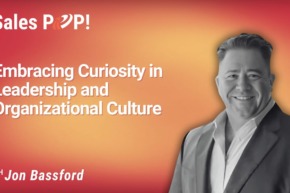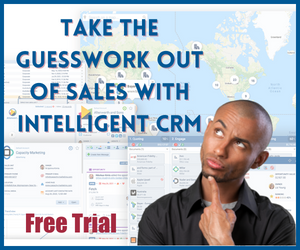In a recent episode of the Expert Insight Interview, John Golden from Sales Pop Online Sales Magazine and Pipeline CRM sat down with Bob Carrothers, a seasoned leadership development expert with over 28 years of experience in executive coaching. The discussion delved into the multifaceted challenges of executive leadership in today’s rapidly evolving business environment. This blog post will break down the key insights and actionable advice shared during the episode, providing a comprehensive guide for current and aspiring leaders.
Introduction to Executive Leadership Challenges
The Unprepared Leader
One of the primary themes discussed was the common scenario where individuals ascend to executive leadership roles without adequate preparation. Transitioning from a technical or specialized role to a leadership position often leaves new leaders grappling with unfamiliar responsibilities. This lack of preparation can lead to significant challenges, including ineffective management and poor decision-making.
Actionable Advice:
- Seek Continuous Learning: Enroll in leadership development programs and workshops.
- Mentorship: Find a mentor who has navigated similar transitions.
- Self-Assessment: Regularly evaluate your leadership skills and identify areas for improvement.
Guiding Leaders on Their Journey
Peer Collaboration
Bob Carrothers emphasizes the importance of peer collaboration in leadership development. He facilitates peer groups where executives can share experiences, discuss challenges, and learn from one another. This collaborative environment fosters a sense of community and provides leaders with diverse perspectives on effective strategies.
Actionable Advice:
- Join Peer Groups: Look for local or industry-specific peer advisory groups.
- Engage in Open Dialogue: Encourage open and honest discussions within your peer group.
- Learn from Others: Actively listen and apply insights from your peers to your leadership approach.
Common Issues in Executive Leadership
The Hiring Challenge
Hiring quality candidates remains a significant challenge for many organizations. The competitive and expensive recruitment landscape often necessitates the use of recruiters to find suitable talent. This issue is prevalent across all organizational levels, making it difficult to build strong, cohesive teams.
Actionable Advice:
- Invest in Recruitment: Allocate resources to professional recruiters and talent acquisition strategies.
- Enhance Employer Branding: Develop a strong employer brand to attract top talent.
- Streamline Hiring Processes: Implement efficient and transparent hiring processes to reduce time-to-hire.
Adapting to Changing Workforce Expectations
The Shift Towards Remote Work
The shift towards remote work has fundamentally changed employee expectations. Today’s workforce seeks flexibility, work-life balance, and a positive company culture. Organizations must adapt to these changing demands to attract and retain talent.
Actionable Advice:
- Flexible Work Policies: Implement flexible work arrangements, such as remote work options and flexible hours.
- Work-Life Balance Initiatives: Promote work-life balance through wellness programs and mental health support.
- Positive Culture: Foster a positive and inclusive company culture that values employee well-being.
Enhancing Workplace Culture
Bob shares examples of companies enhancing their workplace culture through initiatives like four-day workweeks and redesigned office spaces. These efforts aim to create a sense of belonging and engagement among employees, which is crucial for retention.
Actionable Advice:
- Innovative Work Schedules: Experiment with alternative work schedules, such as compressed workweeks.
- Office Redesign: Create inviting and collaborative office spaces.
- Employee Recognition: Implement recognition programs to celebrate employee achievements.
The Importance of Company Culture
Intentional Culture Design
Company culture should not be left to chance; it must be intentionally designed and nurtured. Recognizing and rewarding employees for their contributions is essential for maintaining a positive culture.
Actionable Advice:
- Define Core Values: Clearly define and communicate your organization’s core values.
- Recognition Programs: Develop recognition programs that align with your values.
- Consistent Communication: Regularly communicate the importance of culture to all employees.
Delegation and Leadership Effectiveness
Overcoming Micromanagement
Many leaders struggle with delegation, often leading to micromanagement. Successful delegation involves setting clear expectations and holding team members accountable.
Actionable Advice:
- Set Clear Expectations: Clearly define tasks and expectations for your team.
- Empower Employees: Trust your team to execute their responsibilities.
- Accountability: Establish accountability measures to ensure tasks are completed effectively.
Risk Management in Leadership
Embracing Calculated Risks
Entrepreneurship inherently involves risk, and leaders must be prepared to take calculated risks to drive their organizations forward. Assessing potential rewards against risks and having contingency plans in place is crucial.
Actionable Advice:
- Risk Assessment: Regularly assess potential risks and rewards for business decisions.
- Contingency Planning: Develop contingency plans for potential setbacks.
- Informed Decision-Making: Make informed decisions based on thorough risk analysis.
Navigating the Remote Workforce
Maintaining Company Culture Remotely
Maintaining company culture in a remote work environment presents unique challenges. Many organizations are adopting hybrid work models to foster connection and community.
Actionable Advice:
- Hybrid Work Models: Implement hybrid work models that balance remote and in-office work.
- Team Building: Organize team meetings and social events to reinforce a sense of community.
- Regular Check-Ins: Conduct regular check-ins with remote employees to maintain engagement.
Generational Differences in the Workforce
Adapting Communication Styles
With up to six generations working together, leaders must recognize that different age groups communicate and engage differently. Adapting communication styles to effectively reach all employees is essential.
Actionable Advice:
- Tailored Communication: Adapt your communication style to suit different generational preferences.
- Inclusive Engagement: Foster an inclusive environment that values diverse perspectives.
- Training Programs: Implement training programs to enhance intergenerational communication.
Leveraging Technology and AI
Embracing Technological Advancements
As technology continues to evolve, embracing new tools, including artificial intelligence (AI), is crucial for staying competitive. Many organizations are already integrating AI into their business practices to enhance efficiency and innovation.
Actionable Advice:
- Stay Informed: Keep abreast of technological advancements and their potential applications.
- AI Integration: Explore opportunities to integrate AI into your business processes.
- Continuous Improvement: Continuously seek ways to leverage technology for improved efficiency and innovation.
Conclusion and Final Thoughts
Bob Carrothers’ insights underscore the evolving nature of executive leadership and the importance of adaptability, collaboration, and intentionality in fostering a thriving organizational culture. Through peer advisory groups and coaching, leaders can equip themselves with the skills and insights needed to navigate today’s fast-paced business environment.
For those looking to delve deeper into leadership development, exploring resources like Vistage, which offers peer support and leadership development opportunities, can be invaluable.
This episode serves as a reminder that effective leadership requires continuous learning, intentional culture design, and a willingness to embrace change. By implementing the actionable advice shared in this blog post, leaders can better navigate the complexities of executive leadership and drive their organizations toward success.
Our Host
John is the Amazon bestselling author of Winning the Battle for Sales: Lessons on Closing Every Deal from the World’s Greatest Military Victories and Social Upheaval: How to Win at Social Selling. A globally acknowledged Sales & Marketing thought leader, speaker, and strategist, he has conducted over 1500 video interviews of thought leaders for Sales POP! online sales magazine & YouTube Channel and for audio podcast channels where Sales POP! is rated in the top 2% of most popular shows out of 3,320,580 podcasts globally, ranked by Listen Score. He is CSMO at Pipeliner CRM. In his spare time, John is an avid Martial Artist.








Comments